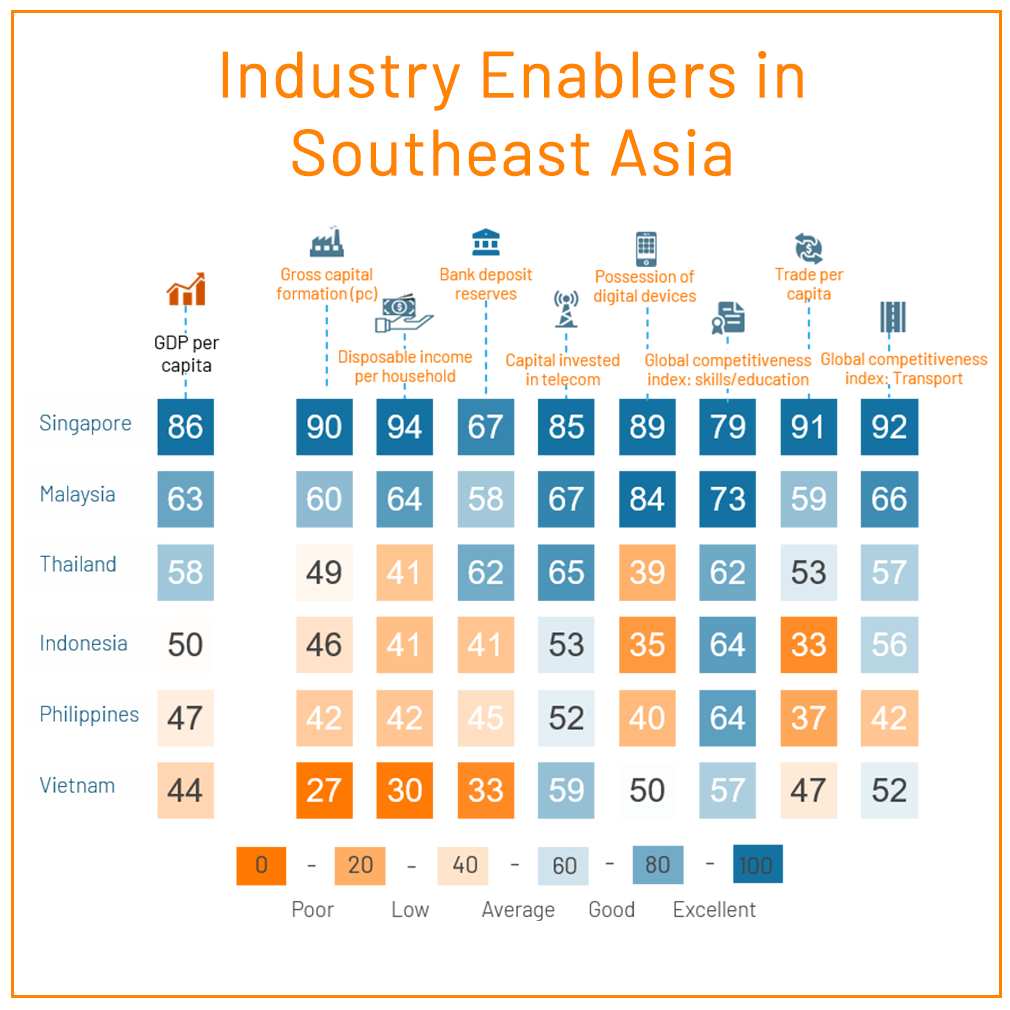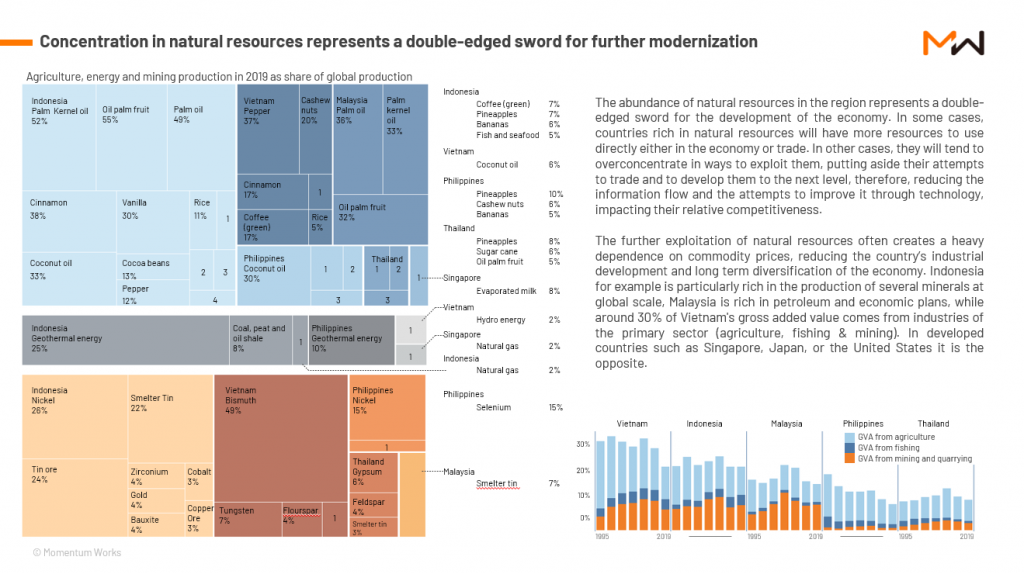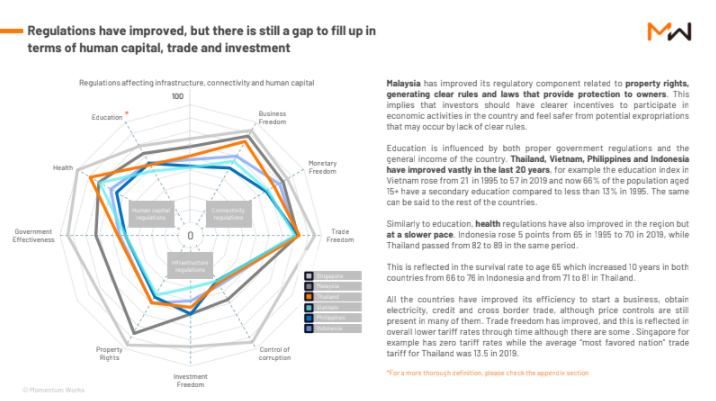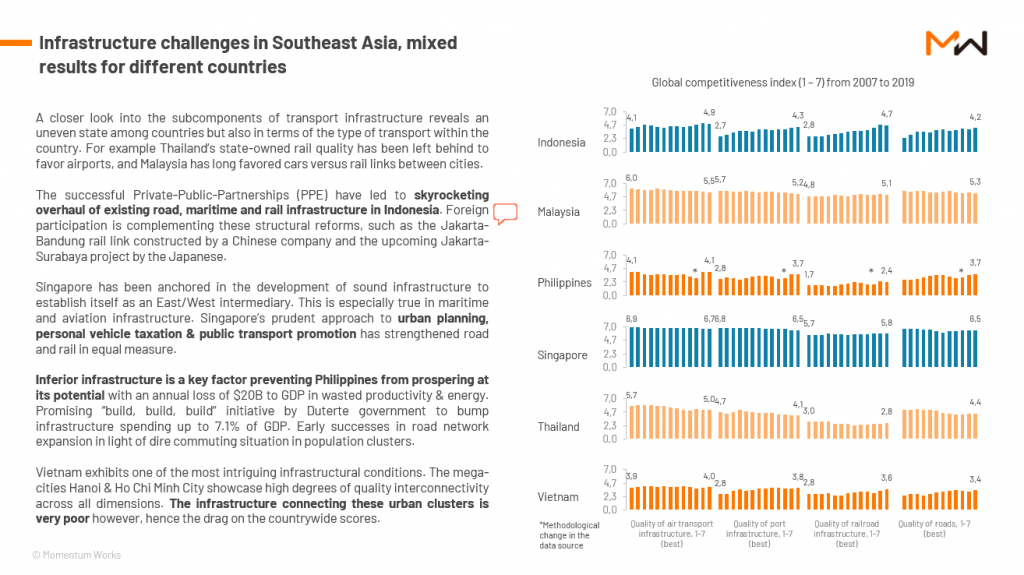Industry Enablers in Southeast Asia 2020
About this report
Outline of this report
- Topographical and natural factors hinder connectivity and infrastructure development in the region
- Population concentrated in and around metropolitan areas
- Geographical fragmentation creates natural barriers to effective connectivity
- Geographical fragmentation raises challenges for modernization
- Concentration in natural resources represents a double-edged sword for further modernization
- Regulations still have room to grow to foster further investment, trade and human capital growth
- Regulations have improved, but there is still a gap to fill up in terms of human capital, trade and investment
- Average trade tariffs rates have been declining through time, except for Indonesia and Philippines
- High levels of corruption disrupt domestic and foreign investment
- Sudden modernization in Southeast Asia skipped some of the necessary stages to consolidate infrastructure and human capital properly
- The shift to industrial societies caused massive changes in the region
- Industrial development is directly associated with a higher household disposable income and higher education
- Possession of durable goods and digital devices directly related to income, trade and regulations
- Possession of durable goods and digital devices in 2019 (percentages) per household
- Modernization and female inclusion in the labour force modelling population structure
- Logistics present connectivity challenges rather than infrastructure quality related problems
- Uneven infrastructure quality, although merchandise trade and disposable income raise
- Infrastructure challenges in Southeast Asia, mixed results for different countries
- Infrastructure quality closely improves with higher levels of international trade and connectivity
- High air and sea connectivity, but road connectivity still lacking, outside Singapore and Thailand
- The strength of the domestic economy is connected to the road infrastructure, Southeast Asia lags behind many other nations
- High smartphone and internet penetration in the region doesn’t mean countries are ready for the next era of digital consumption
- Telecommunications infrastructure increases although Philippines and Indonesia are in the tail
- Mediocre levels of infrastructure affects general quality of services such as internet speed
- Highly regulated environments affects competitiveness resulting in higher prices and less options for consumers
- Digital devices penetration increases fast, especially smartphones
- Lack of infrastructure and human capital hinders the progression to the digital era
- Financial development delayed by mediocre state of human capital
- More infrastructure is not enough to integrate the population into banking
- Human capital in the form of salaries, expenditure and education is critical to increase financial participation.
- The infrastructure itself is not enough to increase the percentage of banked population
- Deregulations allow the banking infrastructure to develop further in terms of quantity and quality
- Banking infrastructure increases with economic development until reaching a point in which the trend decreases, while other factors such as the telecommunication infrastructure rises
- Country snapshots
- Executive country summary
- Watch out for (challenges or opportunities, depending on your perspective)
















![[New Report] Food delivery platforms in Southeast Asia (SEA) 4.0](https://i0.wp.com/thelowdown.momentum.asia/wp-content/uploads/2024/01/Food-delivery-platforms-in-Southeast-Asia-2024-_MW_Jan-2024-2.jpg?resize=100%2C70&ssl=1)
![[New report] Southeast Asia spends US$3.4 billion on modern coffee in 2023](https://i0.wp.com/thelowdown.momentum.asia/wp-content/uploads/2023/11/Coffee-in-Southeast-Asia_MW_Nov-2023-1.png?resize=100%2C70&ssl=1)
![[New report] Apples to Apples 3.0: Benchmarking major tech platforms – what’s next after achieving profitability?](https://i0.wp.com/thelowdown.momentum.asia/wp-content/uploads/2023/09/Apples-to-Apples-3.0_benchmarking-major-tech-platforms_whats-next-after-profitability_MW_Sept-2023-7.jpg?resize=100%2C70&ssl=1)






